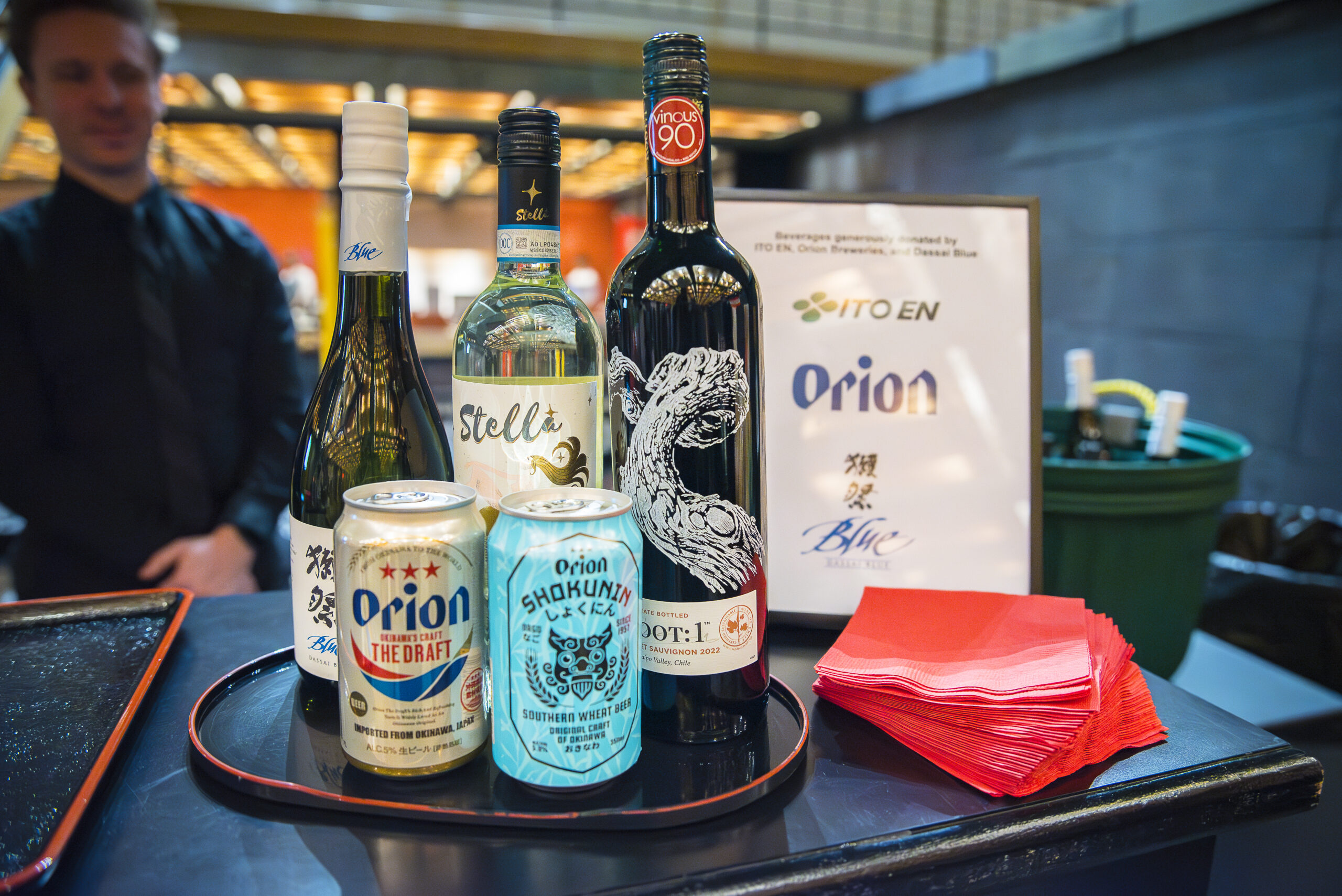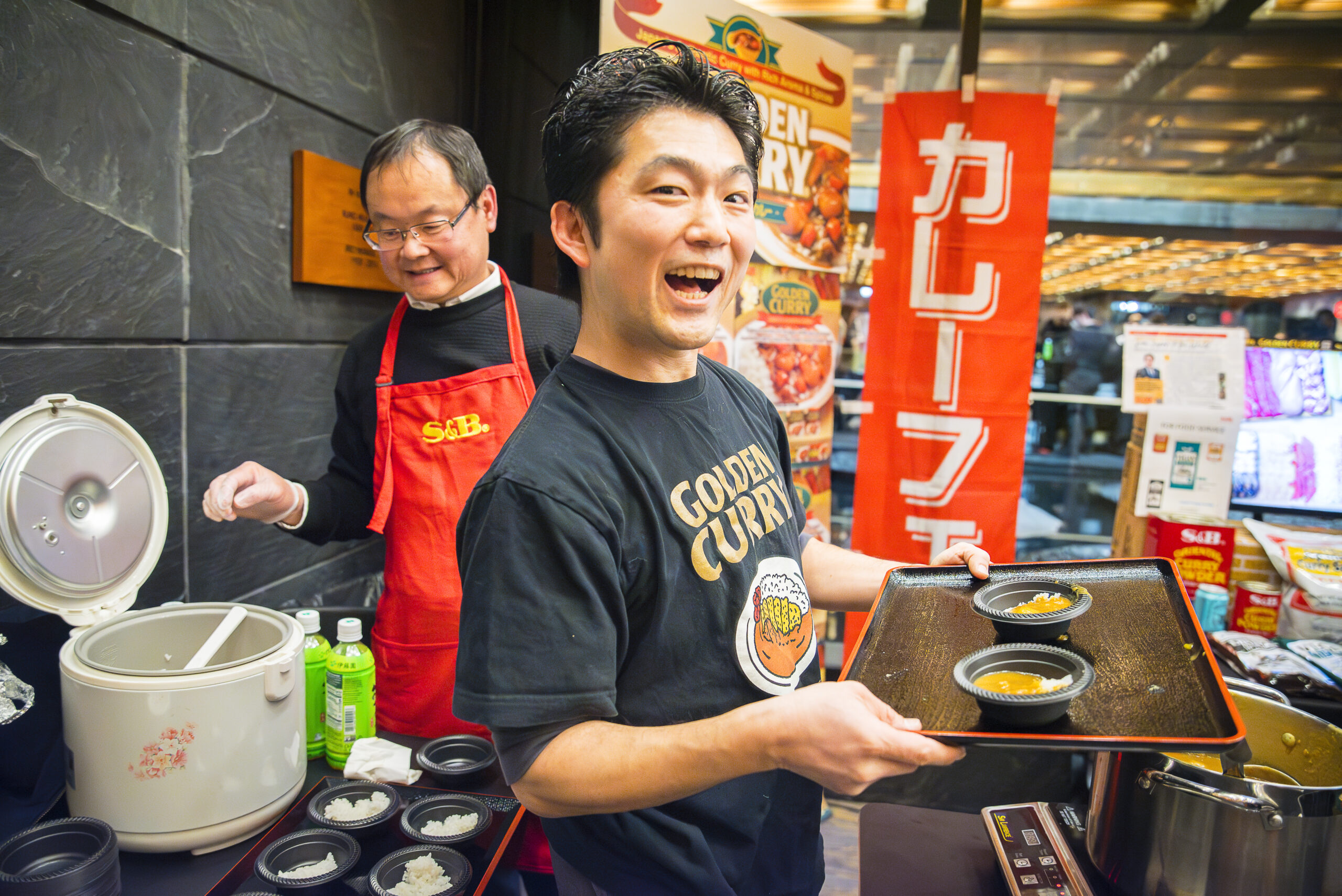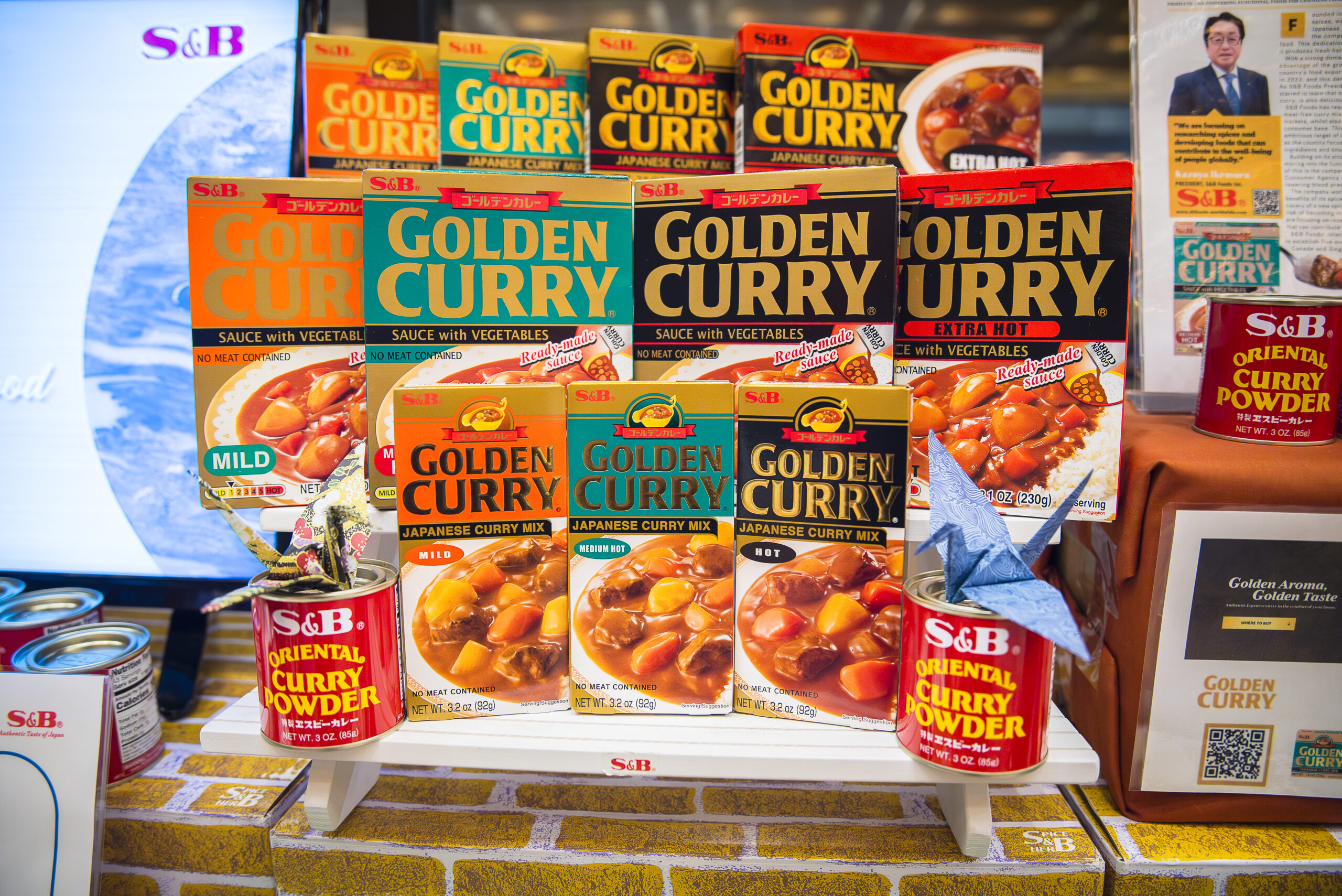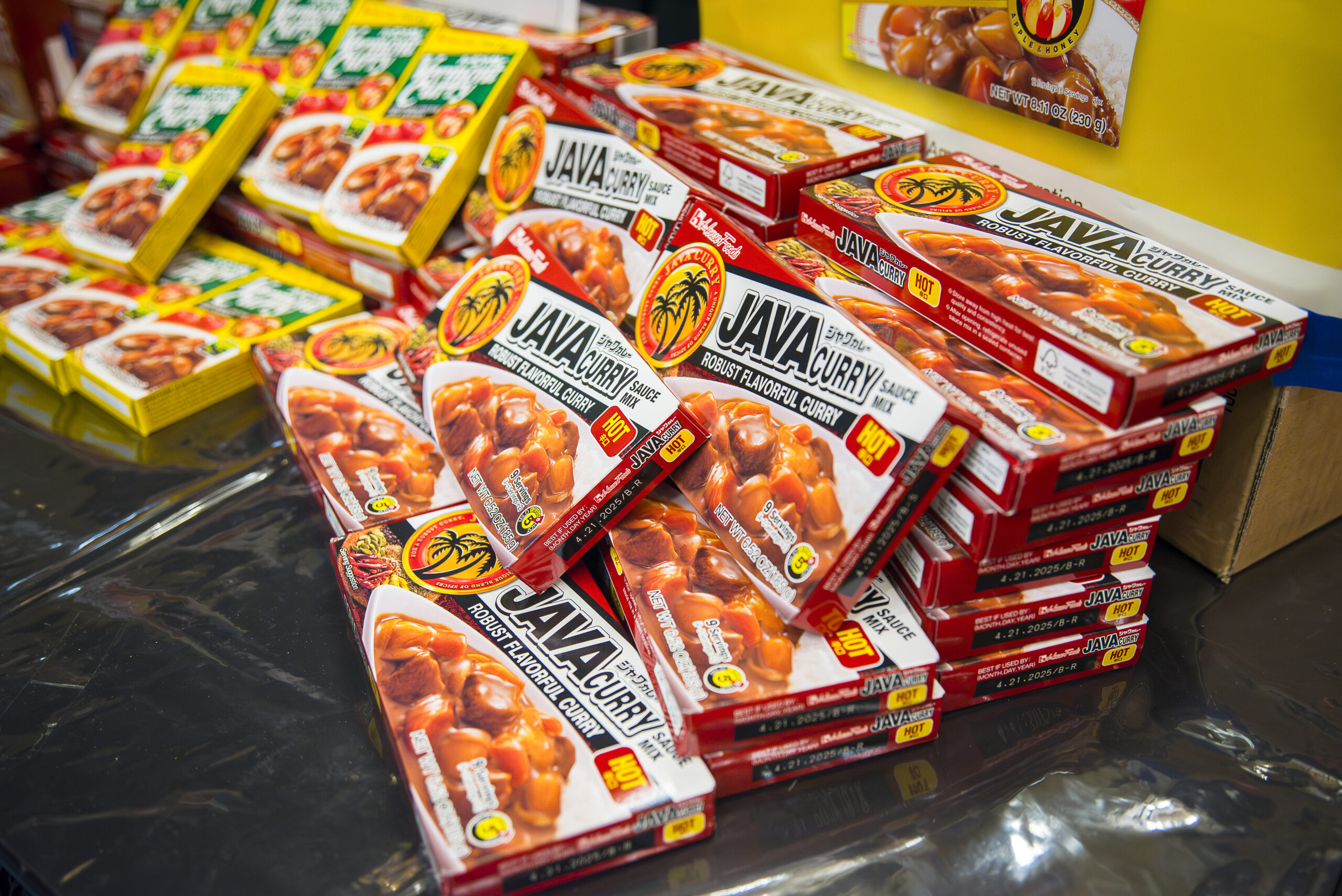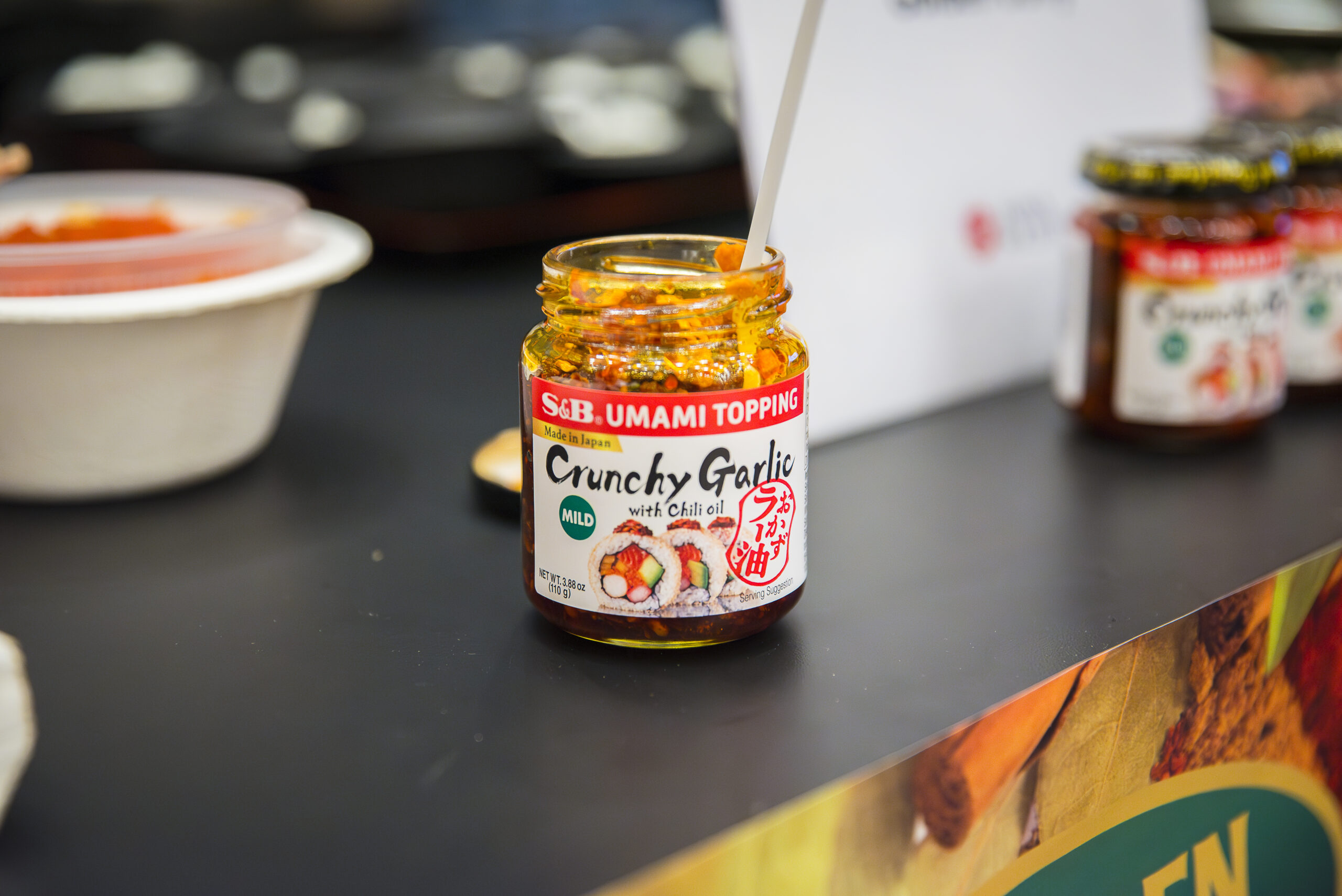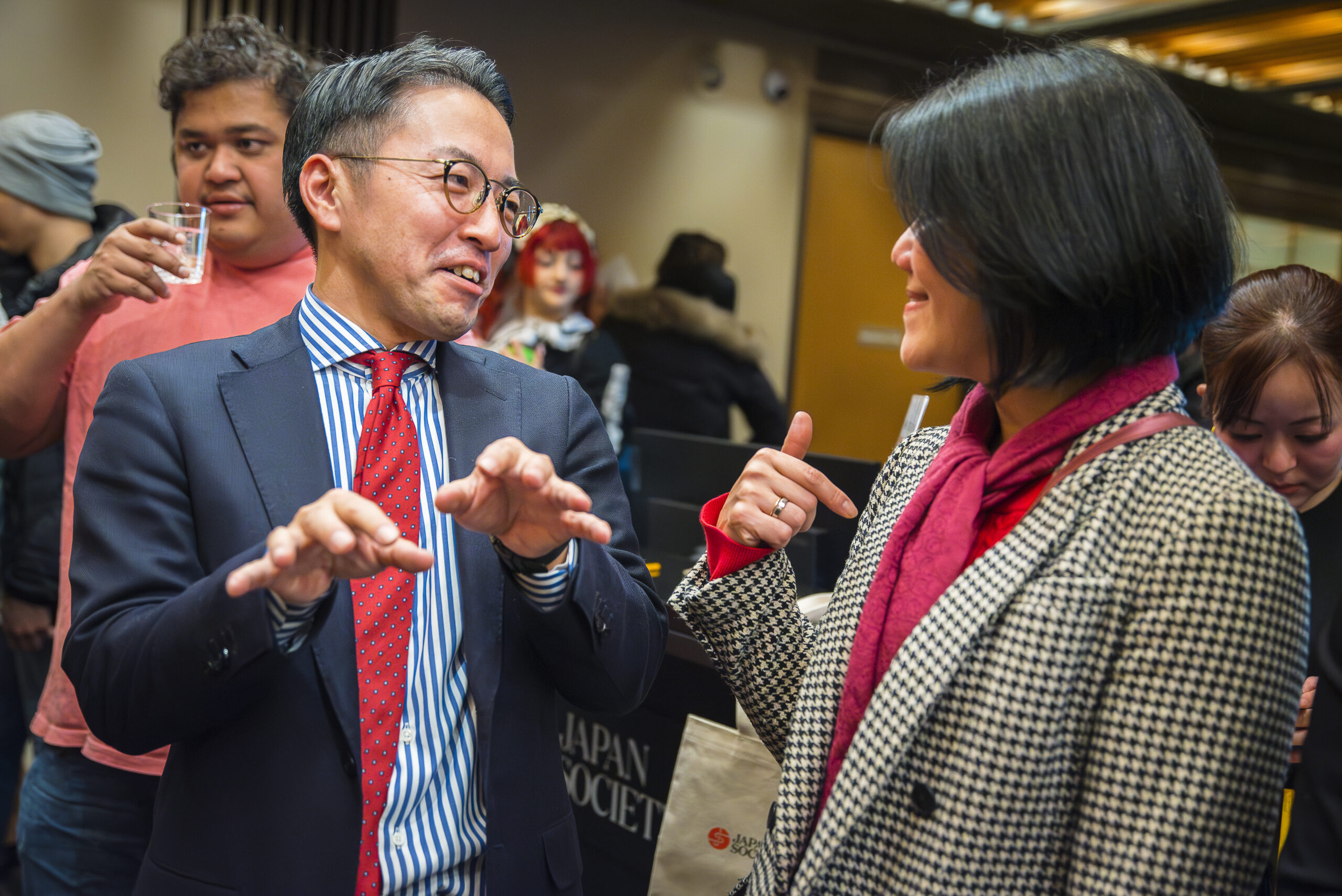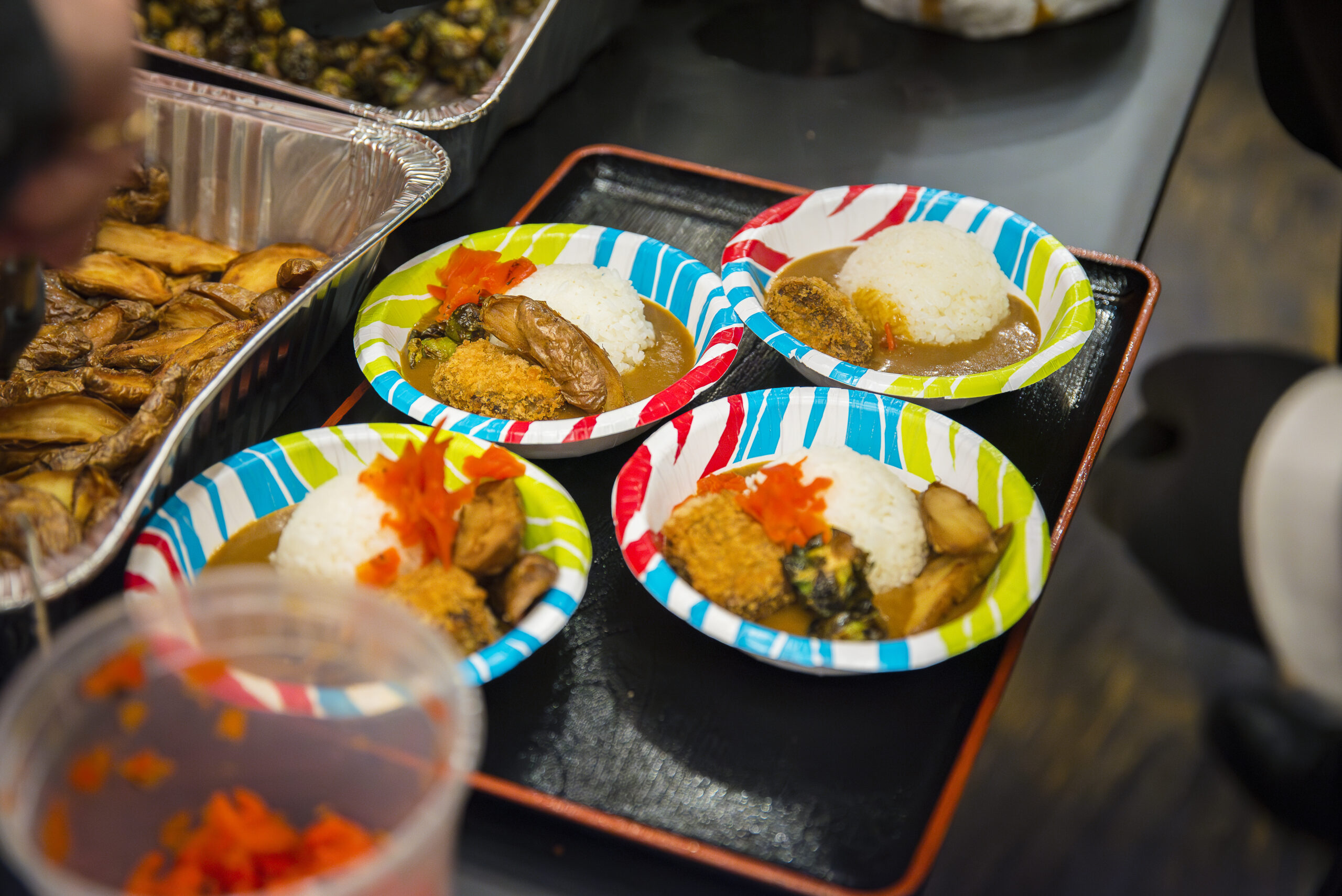Wednesday, February 19, 2025. Japanese Winter Curry Festival, Japan Society. Midtown Manhattan, New York. — A mouth-watering event occurred on a cold winter evening in Midtown Manhattan on Wednesday. Food enthusiasts gathered at the Japan Society (located at 333 East 47th Street) to partake in the Japanese Winter Curry Festival where a variety of Japan’s beloved comfort food, Japanese Curry, a rich, sweet, and savory staple since its introduction to the country in the 1870’s, took on a life of its own.
The Japan Society, in collaboration with the All Japan Curry Manufacturers Association, House Foods, S&B Foods, NY Japanese Restaurant Association, and JRO, proudly presented the Winter Curry Festival in New York City.
For those unfamiliar with what Japanese Curry is, the spice is found in India but was imported to Japan from Britain and now serves as a comfort food in Japan. Japanese style curry differs from Indian, Thai and Caribbean curry as its texture is smoother and balanced in flavor, mixing various ingredients such as carrots, potatoes and onions along with a variety of proteins. Japanese curry is often served alongside rice and pickled vegetables. As a staple in Japan, the average person in Japan will consume curry as much as 70 times (or more) in a year (that’s at least once a week) and is ranked the #2 food in Japan, with a close following behind sushi, which made the #1 slot.
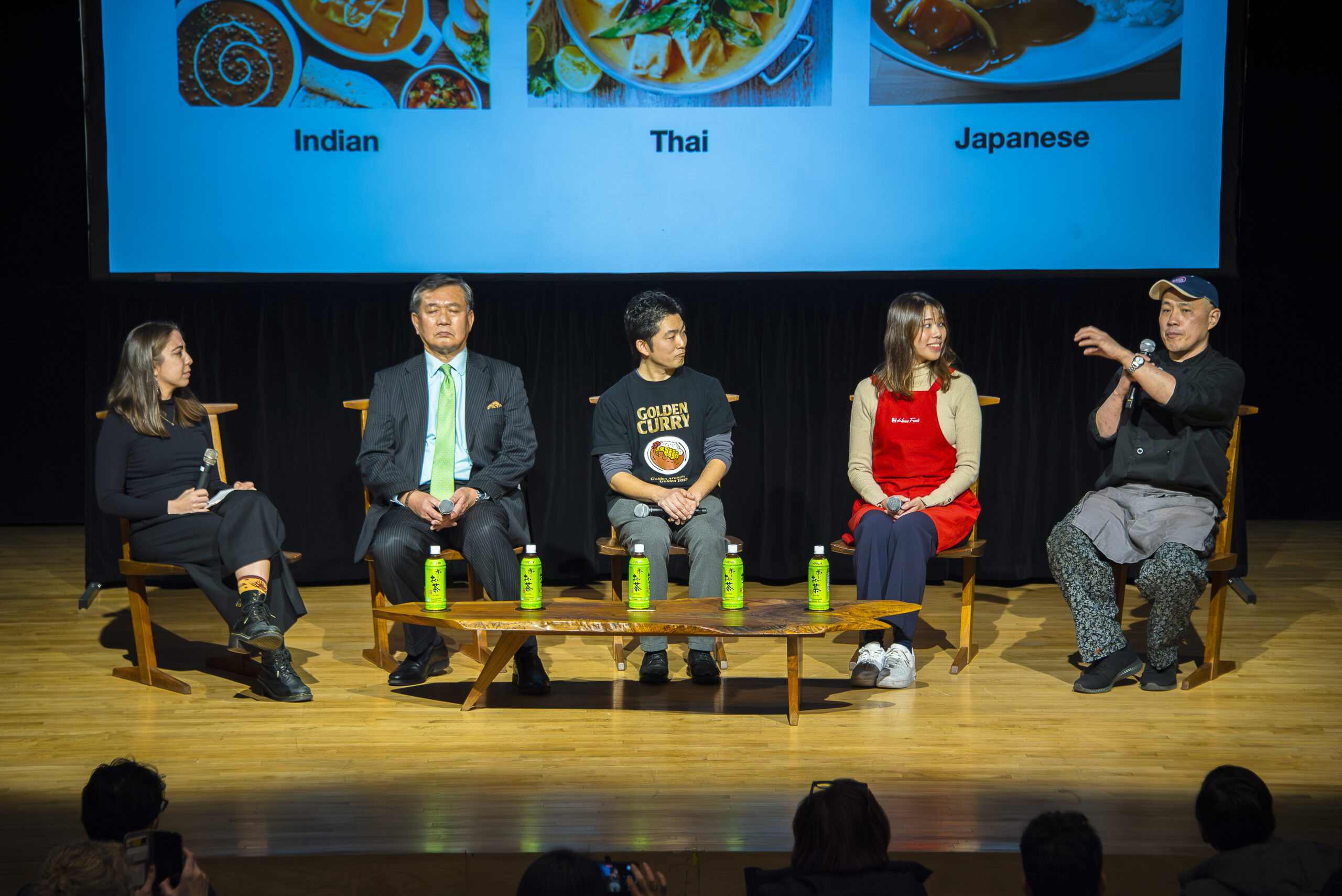
Beryl Shereshewsky, a globally renowned food storyteller and YouTube creator hosted the Japanese Winter Curry Festival panel discussion and opened the event by warming the guests up to the rich flavors on display for the curated tasting. Beryl is best known for her impeccably deep dives into international cuisine, curating cross-cultural culinary conversations through her highly engaging content; and her keen eye for sharing the stories behind oods. Beryl shares her passion for culture and food exploration, the nuances of home cooking, and recipes for comfort dishes across the world. She is a quintessential voice to discuss the versatility, evolution, and enduring appeal of Japanese curry in New York City.
The Knockturnal Interviews Beryl Shereshewsky
Danielle Niecey, The Knockturnal: I am aware that you are a Culture enthusiast, exploring many cultures and regions through foods. What has your experience been with Japanese curry and Japanese culture?
Beryl Shereshewsky: You know, I have 400 videos and I’ve never cooked Japanese curry before this event. But I’ve been to Japan and I have tried Japanese curry while in Japan and that was the first time I had heard of it. My husband is Indian, so I am more familiar with the traditional curry from India. I believe that is the gateway curry for most people.
Danielle Niecey, The Knockturnal: I understand. My family is from the West Indies. We cook with a lot of spices and curry-laden dishes are a huge part of our array of spices.
Beryl Shereshewsky: Yeah, definitely and we also make a lot of curry at home too… although he [my husband] is quick to say that in India, there’s no such thing as ‘Indian’ curry. Calling it ‘Indian curry’ or even ‘curry’ would be odd as it is a British invention that stuck. But in a traditional Indian restaurant, it would be, say, for instance, a dish with chicken and a ray of spices.
Danielle Niecey, The Knockturnal: Nice. I never knew that. It’s amazing to experience curry prepared in various ways. In the West Indies, our curries are very savory, sometimes spicy, typically this,k and become a stew. Ours is typically prepared with a generous portion of fresh, diced vegetables, channa/chickpeas/garbanzo beans, potatoes, scotch bonnet peppers, various spices like black pepper, (I add ginger and cinnamon to mine), and marinated proteins like chicken, beef, fish, pork, lamb or goat. Our curries are popularly paired with various rice like white, cook-up rice, or fried rice; naan bread or roti; or chow-mein. It’s quite the contrast to the way chef-panelist, Misaki Kanda, described their preparations in the Japanese methods, using potatoes, carrots, onion, and scallions at the base and toppings like cheese, crispy garlic or eggs. How different is Indian-style curry from Japanese-style curry?
Beryl Shereshewsky: Indian curry is thinner. Pakistani or Indian curry that is, I’ve noticed that the sauce tends to be a much thinner gravy. Japanese curry is thicker with more umami in its flavorings than say a Pakistani curry would be served. I’ve had Japanese curry before, and it is more balanced in the way that Pakistani curry isn’t. Pakistani curry is more spice-laden and higher on the spice end. You can taste it being a little more jagged in its flavor profile; whereas Japanese curry is a lot smoother on the edges of its flavorings.
Danielle Niecey, The Knockturnal: The panelists expressed excitement about the expansion of Japanese curry being introduced more heavily in the US, starting here in New York. They’ve expressed their excitement for witnessing an evolution and fusion with American-based cuisines. Where do you see the future of Japanese curry in the US market going, especially here in New York?
Beryl Shereshewsky: I think that if you can get one restaurant to do something cool with curry, coupled with a place like New York, which is the best place to get “big” from something “small”...it can become something big…every food needs a moment and if curry can get that moment in New York, all the better. Its [curry] is easy to make at home, the products are already here in the US market to cook it, and itit’sholly a comfort food. Everyone loves comfort food. I think in New York, we’re a culture that is open to a lot of other cuisines and trying new foods of all kinds, at all times. So, if there were ever a place for curry to get its start, New York would be it. It just needs to have its “starburst” moment. I don’t quite know what that moment is but, it needs it.
Beryl and I discussed finding good curry dishes in New York and agreed that boroughs such as Queens or Brooklyn are the hotbed of the spice and except for Hilal trucks, which incorporate the same spices in their dishes, finding spaces where curry is readily served in other popular areas of New York City like Manhattan, the Bronx or Staten Island, were few and far in between. Beryl adds that,
“Any hopes for curry to make its mark in the city would require proper placement, and that in a ‘pretty good restaurant’, introducing the Japanese curry dish, could lead to the boom that it has had in Japan. Or as chef Kakusaburo Sakurai stated, as influential as sushi has been in the United States.”
By way of translation through Rona Tinson, adding to the conversation, Vice Chairman Kousuke Nakajima stated that his vision for the expansion of Japanese curry in the US (specifically New York to start) is to go global, and he believes that New York, s the center of everything and a major player as it pertains to cultural influences that rock the country at large. He wholeheartedly believes that it is the best place to start with the expansion of the dish.
Danielle Niecey, The Knockturnal: What are your concerns with Japanese curry entering the US market? Are you concerned that it would become “Americanized” and lose traditional components? What do you fear changing about the dish?
Kousuke Nakajima: Ah, localization. Yes, well, with Japanese curry, there are so many variations of it already; it’s applied in many different forms in Japan and there are various regional changes and distinctions in its preparation from Japanese Chicken curry to Curry Udon to curried bread; so in a way, even if it goes global and it does integrate into a region, curry will evolve positively.
Danielle Niecey, The Knockturnal: I understand. Tonight will be new for me, I’ve never had Japanese curry. Is this the only type of curry you’ve ever had?
Kousuke Nakajima: No. I’ve had so many…Indian Curry, Thai curry…curry from all over. I love the different countries of the world. Being in the business, I have to try them all. I embrace them all. No enemies in the curries or the world of curry. I enjoy all how they are prepared. 
Danielle Niecey, The Knockturnal: Is there anything else our readers need to know about a good curry?
Answering almost immediately, Kousuke Nakajima says, “Yes, The rice.”
We both exploded into laughter understanding the importance across cultures to present and having readily available, properly steamed white rice to enhance and support the flavor of a savory curry dish. He continues to add, “That is my only concern. You can have a well-flavored curry dish, but if you don’t have a good cooked rice it will ruin the dish.”
That is my only concern. You can have a well-flavored curry but if you don’t have a good cooked rice it will ruin the dish. – Kousuke Nakajima
Danielle Niecey, The Knockturnal: This is so true. The same sentiment is shared in the West Indies. Good rice is a must. Do you ever serve curry or are there dishes where curry is served with sticky rice? I’d like to try that someday…
Kousuke Nakajima: Hmm, no haven’t seen that. You’ll have to try it out and let us know how it is.
Danielle Niecey, The Knockturnal: I definitely will. Arigatō.
Kousuke Nakajima: Arigatō.
